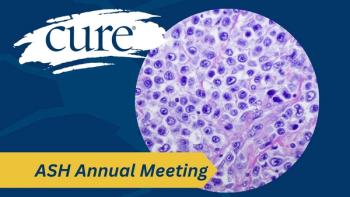
Conjugated Equine Estrogen Increases Gynecologic Cancer Death Rates
Postmenopausal patients with ovarian or endometrial cancer who received conjugated equine estrogen may have increased mortality rates.
For patients with ovarian and endometrial cancer, receiving conjugated equine estrogen (CEE; a drug that includes estrogen hormones to treat menopause symptoms) alone was associated with significantly increased cancer-related mortality rates, compared with placebo (inactive treatment) in postmenopausal women who had undergone a prior hysterectomy (surgical removal of the uterus), according to 20-year follow-up data from 2 Women’s Health Initiative (WHI) clinical trials presented during a
Findings from another randomized study also found that in postmenopausal women with a uterus, CEE in combination with medroxyprogesterone acetate (MPA; menopausal hormone therapy) was not associated with increased ovarian cancer mortality versus placebo — a finding that contrasted data from prior observational studies.
In 2023, endometrial and ovarian cancer accounted for 13,030 and 13,270 deaths, respectively, in the United States, according to a study published in A Cancer Journal for Clinicians.
“CEE and MPA were approved [as] hormone therapy in the United States [US] in 1943, and the question about endometrial and ovarian cancer has since remained unsettled after nearly 50 years of follow-up,” Dr. Rowan T. Chlebowski, said during the press briefing.
Chlebowski is an investigator at The Lundquist Institute, as well as chief of the Division of Medical Oncology and Hematology at the Harbor-University of California, Los Angeles (UCLA) Medical Center and a professor of medicine at the David Geffen School of Medicine at UCLA.
The analysis from the study in A Cancer Journal for Clinicians included data from two randomized, placebo-controlled, WHI clinical trials that were conducted at 40 clinical centers in the US and enrolled patients from 1993 to 1998. The first trial enrolled 10,739 postmenopausal women who had undergone a prior hysterectomy and received either CEE or placebo.
The second trial enrolled 16,608 postmenopausal women with an intact uterus who received either CEE plus MPA or placebo. Patients were eligible for inclusion in either study if they were 50 to 79 years of age and had no history of breast cancer, with protocol-mandated annual mammogram findings that were not suggestive of breast cancer and endometrial biopsies that were not suggestive of endometrial cancer.
“We only did a study with endometrial cancer in the women who got CEE plus MPA because we had previously known about the increased risk of endometrial cancer in women getting estrogen alone,” Chlebowski noted.
In the CEE-alone trial, ovarian cancer developed in 35 patients who received CEE alone, compared with 17 of those who received placebo. In these respective populations, ovarian cancer mortality occurred in 25 and nine patients, and death from all causes after ovarian cancer occurred in 30 and 12 patients.
“This is the first randomized clinical trial with evidence to indicate that ovarian cancer mortality is increased by [use of] estrogen alone,” Chlebowski emphasized.
In the CEE-plus-MPA trial, ovarian cancer developed in 75 patients who received CEE plus MPA versus 63 of those who received placebo. In these respective populations, ovarian cancer mortality occurred in 65 and 52 patients. Death from all causes after ovarian cancer occurred in 68 and 48 patients.
Endometrial cancer developed in 106 patients who received CEE plus MPA versus 140 of those who received placebo. In these respective populations, endometrial cancer mortality occurred in 13 and 21 patients, and death from all causes after endometrial cancer occurred in 51 and 72 patients.
“These findings inform decisions regarding hormone therapy use and suggest reconsideration of guideline recommendations regarding [the use of] estrogen alone in [postmenopausal women],” Chlebowski concluded.
For more news on cancer updates, research and education, don’t forget to





